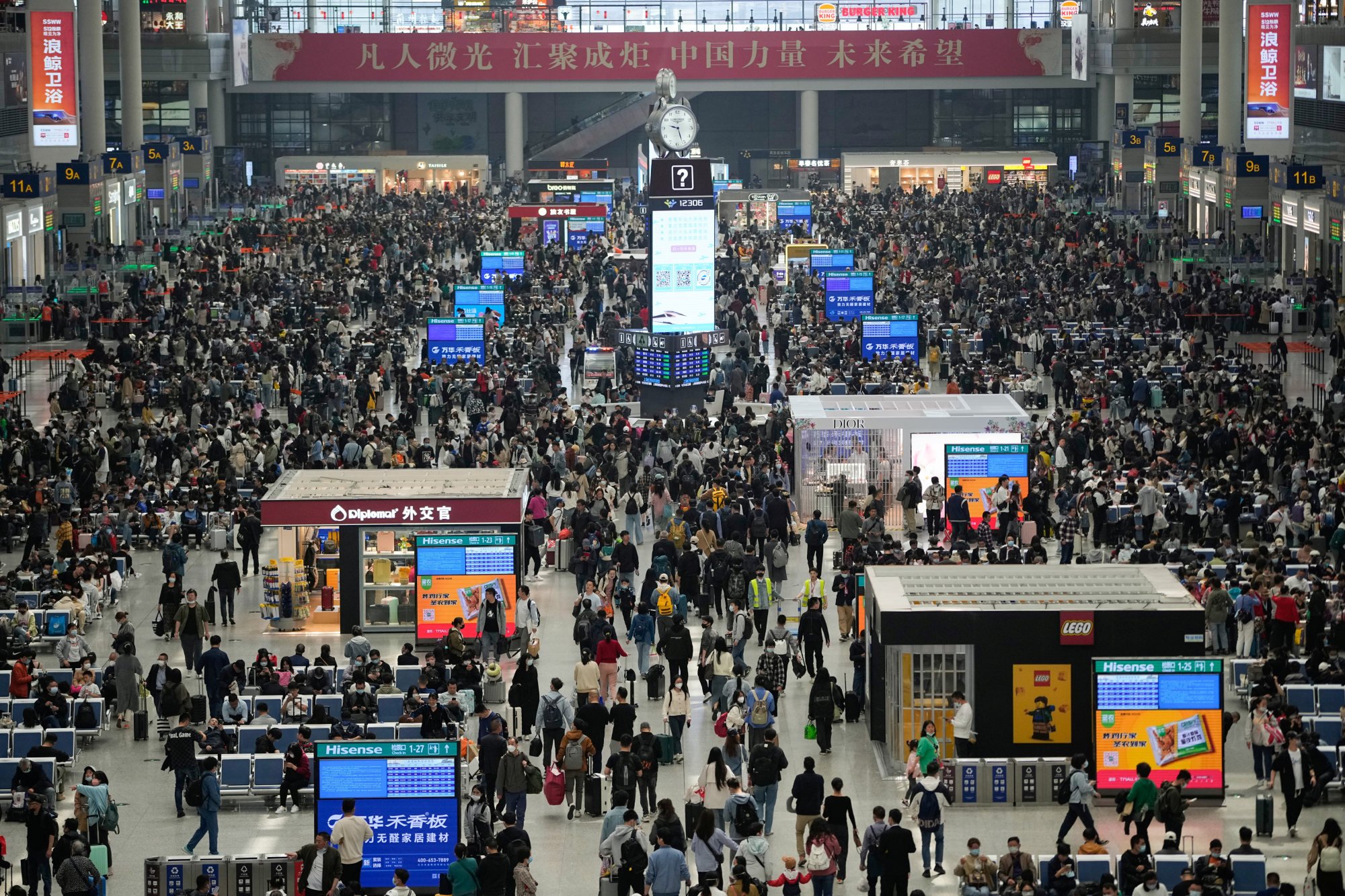
China’s ‘golden week’ travel numbers expected to surge past pre-Covid levels as country’s economic rebound gains pace
- The extended Labour Day holiday is expected to see around 240 million journeys being taken around the country
- But while traveller numbers were up, total tourism revenues are not expected to reach the pre-pandemic level this year
In total, the number of journeys made between Saturday and Wednesday will be 4 per cent up on the 2019 total, with an average journey length of 270 to 280km (161-173 miles), state broadcaster CCTV reported, citing forecasts by the China Tourism Academy.
The report said the number of orders for domestic trips is the highest that it has been in five years, with searches for hotels seeing a ninefold increase from last year. However, while tourism revenue is expected to exceed 120 billion yuan (US$17 billion), that is around 83 per cent of the pre-pandemic level.
Shanghai’s railway system reported that a record 558,000 passengers had left the city on Friday, including 180,000 from its main station and 309,000 from Shanghai Hongqiao Station, where all tickets had sold out.
Videos circulating online showed travellers queuing – in some cases since dawn – in jam-packed terminals in other major cities, including Beijing, Guangzhou and Hangzhou.
Japan ends Covid travel rules to make most of ‘golden week’ holiday rush
Meanwhile, a total of 217,000 inbound and outbound passengers passed through Shanghai’s main airport, Pudong International, on the same day.
In the week leading up to the holiday, 37,000 passengers and 210 flights a day arrived at or left the airport, a 30 per cent year-on-year increase, state news agency Xinhua reported.
Beijing Business Today reported that on Saturday, the number of inbound and outbound passengers at the city’s Capital Airport was expected to reach 178,500, with 145,100 at the newer Daxing Airport.
At least 100 concerts are being staged at popular destinations around the country in the hope of attracting tourists, while hotels and popular attractions have been warned against price-gouging.
One of the most popular destinations for younger visitors was Zibo, a city in the eastern province of Shandong, whose barbecues have become a favourite of social media influencers.

Data from travel agency Ctrip, published in the newspaper Time Weekly, showed that first-day bookings in the city were up 40-fold year-on-year.
According to the local authorities, hotel bookings for the week had increased by 800 per cent compared with pre-pandemic levels, with trains from Beijing to Zibo on Monday selling out in one minute.
More than 80 per cent of those visitors are estimated to have been born in the 1990s and 2000s.
The rules against price-gouging also became a hot topic on social media after one traveller noted that the cost of their accommodation had halved after the local authorities banned hotels by raising their prices by more than 50 per cent during the holiday.
Hong Kong hotel room rates surge ahead of Labour Day ‘golden week’ holiday
The holiday marks the country’s first extended break since Lunar New Year and since international travel restrictions were lifted in February.
“Judging from the forecast data, this year will have the best Labour Day tourism market since 2020, and it will also be the first turning point for the tourism market’s recovery and the industry’s revitalisation,” Da Bin, president of the China Tourism Academy, which collects data for the culture and tourism ministry, told CCTV.
Da said the four main trends during the holiday were more travellers, longer distances, longer journeys and a greater demand for cultural experiences.
“In the past, they may have a day trip, but now they may spend a weekend or even longer, perhaps to experience a place in depth,” said Da.
“People used to go out to see the mountains, rivers and the scenery, but now we see that many tourists are responding very positively to intangible cultural heritage, cultural venues and museums, or immersive performances.”

“Golden week” became one of the top trending topics on the social media platform Weibo on Saturday, with millions discussing the number of travellers.
CCTV also reported that many tourists were travelling outside the mainland with data showing that the number of outbound tourists during this holiday would be 200 per cent higher than the number recorded during Spring Festival.
Transport Minister Li Xiaopeng on Saturday urged all units to “attach great importance, vigilance, and responsibility” to operations during the week, while thanking frontline workers and their families for remaining in their positions, according to the ministry website.
“It is necessary to focus on strengthening guaranteed travel services and meet the passengers’ travel needs through multiple channels,” Li said during a visit to the Transportation Emergency Command Centre.

